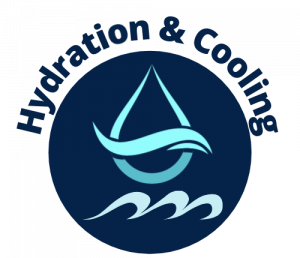Discover essential hydration strategies for football teams during two-a-day practices. Learn how to prevent heat-related illness and maximize performance with proper hydration planning.
_______________________________
Football Practice Intensive: Hydration Strategies for Two-a-Days
Why Hydration Matters During Two-a-Day Football Practices
Two-a-day football practices in the summer heat create perfect conditions for dehydration and heat-related illness. With players losing up to 2 gallons of sweat during intensive training sessions, proper hydration isn’t just about performance—it’s about player safety. When temperatures soar and practices intensify, the risk of heat exhaustion and heat stroke increases dramatically. Football teams need specialized hydration protocols that address the unique challenges of multiple daily practices, heavy equipment, and high-intensity drills. Without strategic hydration planning, players face decreased performance, increased injury risk, and potentially life-threatening heat illness. Implementing effective hydration strategies during these intensive training periods can be the difference between a successful preseason and a dangerous situation. Moreover, coaches and trainers must be vigilant in monitoring players for signs of dehydration and heat stress, particularly for those with preexisting medical conditions in football. These individuals may have altered responses to heat and hydration needs, making it imperative to tailor hydration strategies to ensure their safety. Prioritizing education about hydration and recognizing the symptoms of heat-related illnesses can empower players and reduce the risk of serious health complications.
Creating an Effective Two-a-Day Hydration Protocol
A comprehensive hydration strategy for football practices begins well before players hit the field. Coaches should establish a 24-hour hydration cycle that accounts for pre-practice, during-practice, and recovery phases. Players should start hydrating at least 2-3 hours before morning practice, consuming 16-20 ounces of water or sports drink. During practice, water breaks should occur every 15-20 minutes, with players consuming 7-10 ounces each time.
Between sessions, recovery hydration is critical. Players need to replace not just water but also electrolytes lost through sweat. Weighing players before and after practice provides valuable data—for every pound lost, athletes should consume 16-20 ounces of fluid. This precision approach ensures players aren’t starting their second session already dehydrated.
The logistics of hydration delivery matter significantly. Traditional water bottles create bottlenecks during breaks and often provide insufficient volume. Team hydration stations that allow multiple players to access water simultaneously maximize the effectiveness of brief hydration breaks. Cooling stations that combine hydration with temperature management further enhance recovery between practice sessions.
Monitoring Hydration Status During Intensive Practice Periods
Effective hydration management requires consistent monitoring. Coaches and athletic trainers should implement both objective and subjective assessment tools. Urine color charts in locker rooms give players immediate feedback on their hydration status—dark yellow indicates dehydration, while pale straw color suggests proper hydration. Weight tracking before and after practices quantifies fluid loss and helps customize replacement needs.
Training staff should also watch for early warning signs of dehydration, including decreased performance, muscle cramps, excessive fatigue, and headaches. More serious symptoms like dizziness, confusion, or cessation of sweating require immediate intervention. Establishing a buddy system where players watch each other for these signs creates an additional safety net during intensive practice periods.
Adapting Hydration Strategies to Environmental Conditions
Two-a-day practices often occur during the hottest part of summer, requiring flexible hydration approaches based on weather conditions. Teams should use wet-bulb globe temperature (WBGT) readings to assess heat risk and modify practice and hydration protocols accordingly. As WBGT readings increase, hydration frequency and volume should increase proportionally, while practice intensity may need to decrease.
On extremely hot days (WBGT above 92°F), consider moving practices to early morning and evening, extending recovery periods, and implementing additional cooling strategies such as misting fans on sidelines. These fans can reduce ambient temperature by up to 30 degrees through flash evaporation, creating cooling zones for players during breaks and between sessions.
Take Action: Protect Your Team with Proper Hydration Solutions
Don’t wait for a heat emergency to upgrade your team’s hydration strategy. Hydration & Cooling offers complete solutions designed specifically for football programs facing the challenges of intensive practice schedules. Our Team Hydration Stations allow multiple players to access water simultaneously, eliminating waiting time during precious break periods. Combined with our Outdoor Misting Fans, you can create the ultimate sideline recovery zone that addresses both hydration and temperature management.
Call us today at 828-820-8600 to discuss your team’s specific needs and receive a customized hydration plan for your two-a-day practice schedule. Remember, proper hydration isn’t just about performance—it’s about player safety. When life gets hot, we do cool! As the season progresses and temperatures drop, it’s essential to adjust your approach to hydration. Our experts can also provide tailored sports hydration strategies for winter, ensuring your team maintains optimal performance and stays healthy during colder months. Don’t let the chill fool you—staying properly hydrated is crucial year-round!
How often should football players hydrate during two-a-day practices?
Players should hydrate every 15-20 minutes during practice, consuming 7-10 ounces of fluid each time. Additionally, they should drink 16-20 ounces of water or sports drink 2-3 hours before practice begins and follow a post-practice recovery protocol based on weight loss (16-20 ounces per pound lost).
What are the warning signs of dehydration during football practice?
Early warning signs include dark urine, decreased performance, muscle cramps, fatigue, and headaches. More serious symptoms requiring immediate intervention include dizziness, confusion, cessation of sweating, rapid pulse, and disorientation. Implementing a buddy system helps players monitor each other for these signs.
